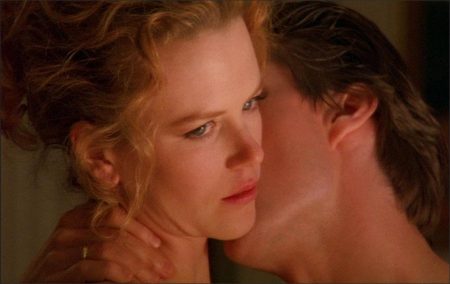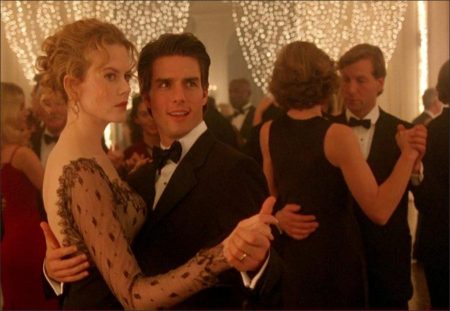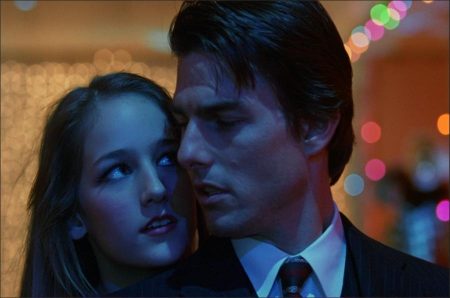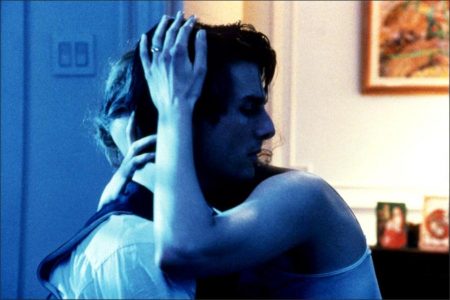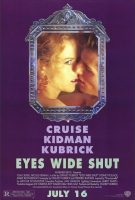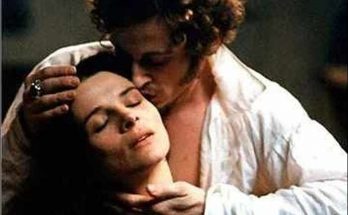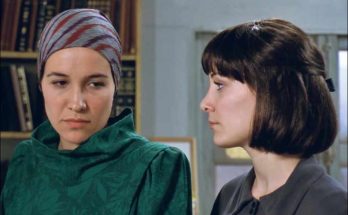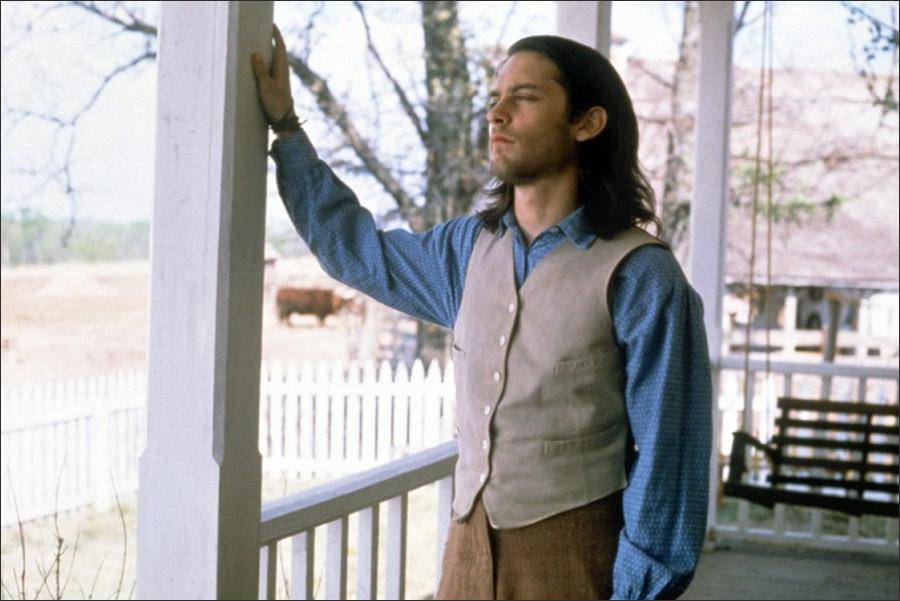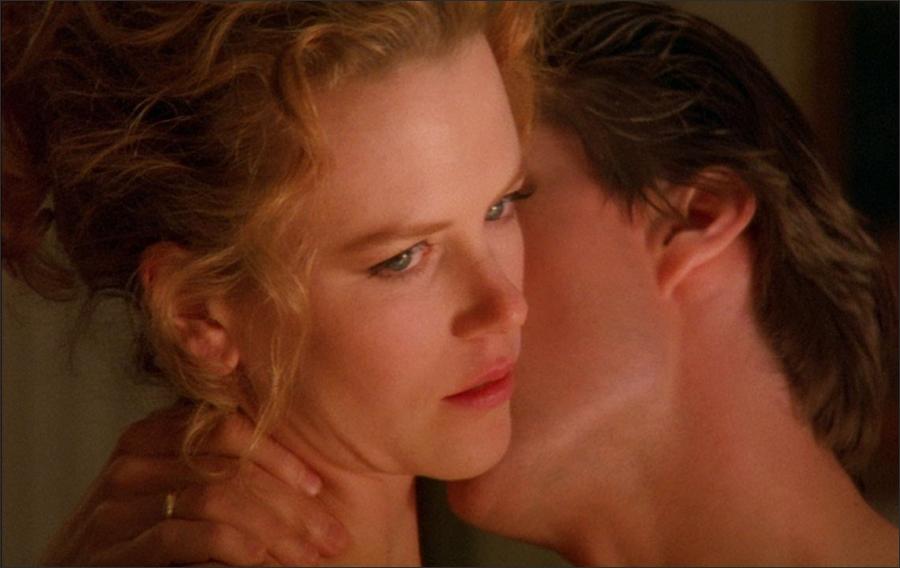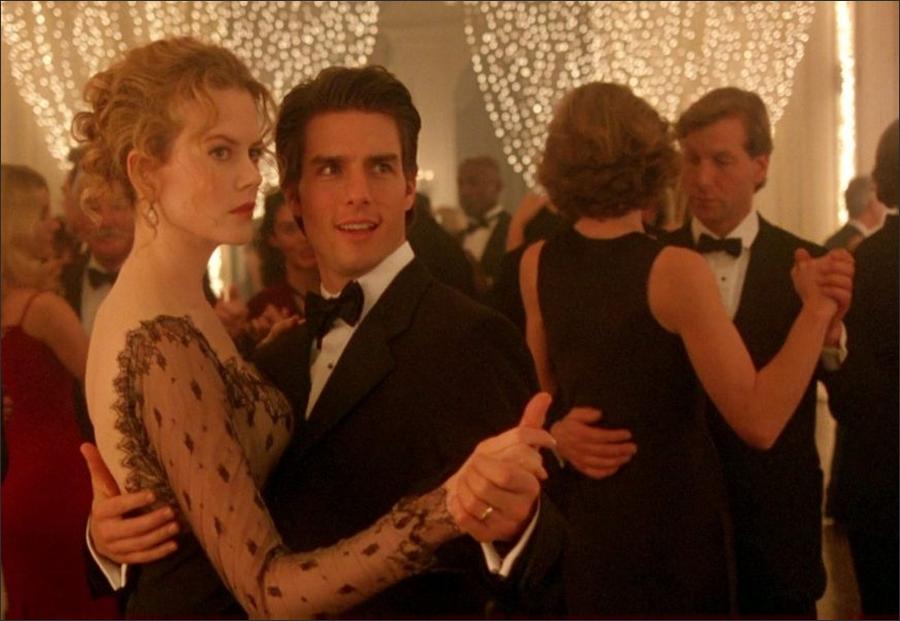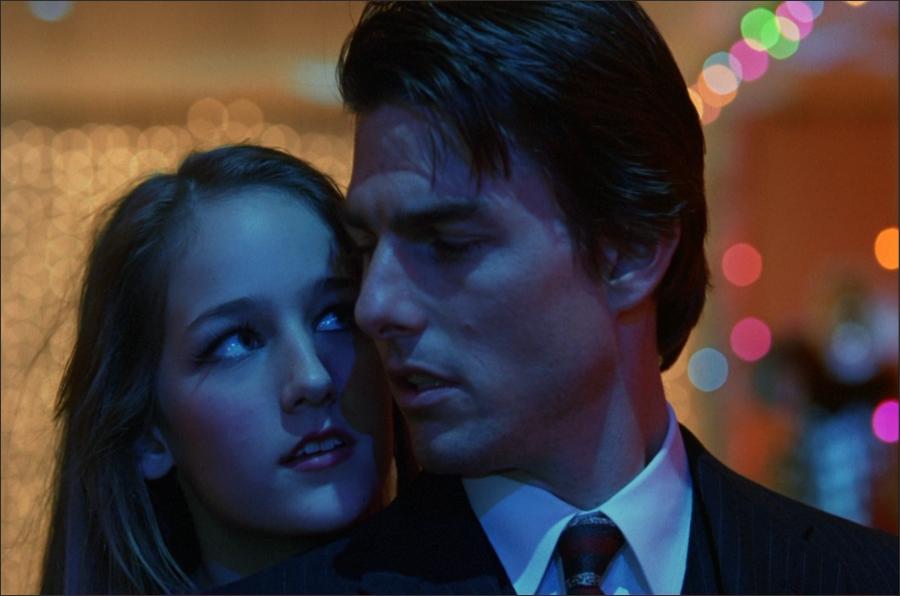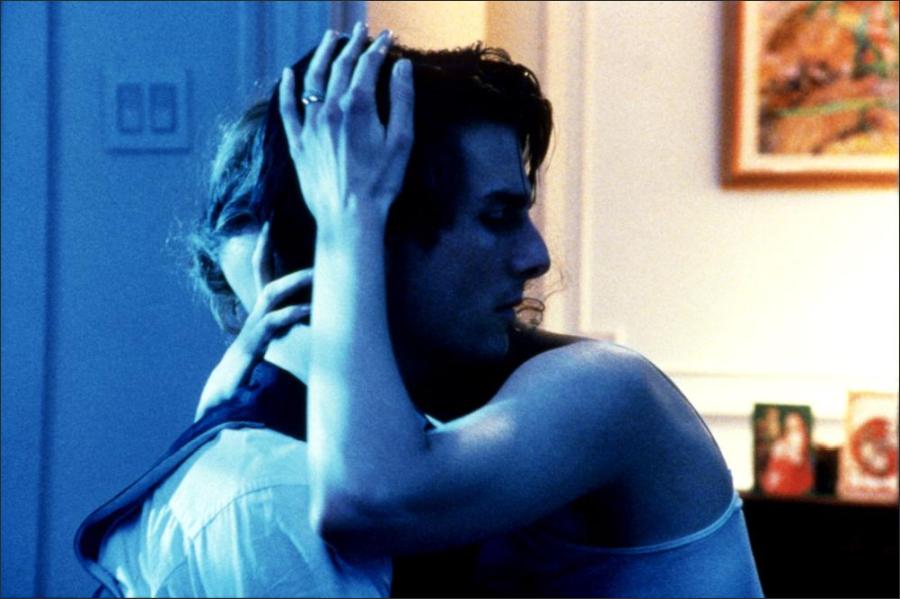Taglines: Cruise. Kidman. Kubrick.
Eyes Wide Shut movie storyline. After his wife, Alice, tells him about her sexual fantasies, William Harford sets out for a night of sexual adventure. After several less than successful encounters, he meets an old friend, Nick Nightingale – now a musician – who tells him of strange sex parties when he is required to play the piano blindfolded.
All the men at the party are costumed and wear masks while the women are all young and beautiful. Harford manages to find an appropriate costume and heads out to the party. Once there, however, he is warned by someone who recognizes him, despite the mask, that he is in great danger. He manages to extricate himself but the threats prove to be quite real and sinister.
Eyes Wide Shut is a 1999 erotic drama film directed, produced, and co-written by Stanley Kubrick. Based on Arthur Schnitzler’s 1926 novella Traumnovelle (Dream Story), the story is transferred from early 20th century Vienna to 1990s New York City. The film follows the sexually-charged adventures of Dr. Bill Harford, who is shocked when his wife, Alice, reveals that she had contemplated having an affair a year earlier. He embarks on a night-long adventure, during which he infiltrates a massive masked orgy of an unnamed secret society.
Kubrick obtained the filming rights for Dream Story in the 1960s, considering it a perfect text for a film adaptation about sexual relations. The project was only revived in the 1990s, when the director hired writer Frederic Raphael to help him with the adaptation. The film was mostly shot in the United Kingdom (aside from some exterior establishing shots), and included a detailed recreation of some exterior Greenwich Village street scenes at Pinewood Studios. The film spent a long time in production, and, at 400 days, holds the Guinness World Records longest continuous film shoot.
Eyes Wide Shut was Kubrick’s last film; he died six days after showing his final cut to Warner Bros. To ensure a theatrical R rating in the United States, Warner Bros. digitally altered several sexually-explicit scenes during post-production. This version was released on July 16, 1999 to moderately positive reactions from critics; worldwide takings at the box office amounted to $162 million. The uncut version has since been released in DVD, HD DVD, and Blu-ray Disc formats.
Eyes Wide Shut opened on July 16, 1999, in the United States. The film topped the weekend box office, with $21.7 million from 2,411 screens. These numbers surpassed the studio’s expectations of $20 million, and became both Cruise’s sixth consecutive chart topper and Kubrick’s highest opening weekend. Audiences attendance dropped from Friday to Saturday, which analysts attributed to the news coverage of John F. Kennedy, Jr.’s disappearance. Eyes Wide Shut ended up grossing a total of $55,691,208 in the US. The numbers put it as Kubrick’s second most successful film in the country, behind 2001: A Space Odyssey, but were considered a box office disappointment.
Principal photography began in November 1996. Kubrick’s perfectionism led to script pages being rewritten on the set, and most scenes requiring numerous takes. The shoot went much longer than expected, with Vinessa Shaw—playing the HIV-positive prostitute—being initially contracted for two weeks, but ending up working for two months. The crew got exhausted. Filming finally wrapped in June 1998. The Guinness World Records recognized Eyes Wide Shut as the longest constant movie shoot, “for over 15 months, a period that included an unbroken shoot of 46 weeks”.
Given Kubrick’s fear of flying, the entire film was shot in England. Sound-stage works were done at London’s Pinewood Studios, which included a detailed recreation of Greenwich Village. Kubrick’s perfectionism went as far as sending workmen to Manhattan to measure street widths and note newspaper vending machine locations. Real New York footage was also shot to be rear projected behind Cruise. Production was followed by a strong campaign of secrecy, helped by Kubrick always working with a short team on set.
Outdoor locations included Hatton Garden for a Greenwich Village street, Hamleys for the toy store from the film’s ending, and Mentmore Towers and Elveden Hall in Elveden, Suffolk, England for the mansion. Larry Smith, who had first served as a gaffer on both Barry Lyndon and The Shining, was chosen by Kubrick to be the film’s cinematographer. Kubrick refused to use studio lighting, forcing Smith to use the available light sources visible in the shot, such as lamps and Christmas tree lights. When this was not adequate, Smith used Chinese paper ball lamps to softly brighten the scene. The color was enhanced by push processing the film reels, which helped bring out the intensity of color.
Kubrick’s perfectionism led him to oversee every visual element that would appear in a given frame, from props and furniture to the color of walls and other objects. One such element were the masks used in the orgy, which were inspired by the masked Carnival balls visited by the protagonists of the novel. Costume designer Marit Allen explained that Kubrick felt they fit in that scene for being part of the imaginary world, and ended up “creat[ing] the impression of menace, but without exaggeration”. Many masks as used in the Venetian carnival were sent to London, and Kubrick separated who would wear each piece. The paintings of Kubrick’s wife Christiane are featured on decoration.
After shooting completed, Kubrick entered a prolonged post-production process. On March 1, 1999, Kubrick showed a cut to Cruise, Kidman, and the Warner Bros. executives. The director died six days later.
Eyes Wide Shut (1999)
Directed by: Stanley Kubrick
Starring: Tom Cruise, Nicole Kidman, Sydney Pollack, Vinessa Shaw, Marie Richardson, Rade Serbedzija, Fay Masterson, Leelee Sobieski, Thomas Gibson, Todd Field
Screenplay by: Stanley Kubrick, Frederic Raphael
Production Design by: Leslie Tomkins, Roy Walker
Cinematography by: Larry Smith
Film Editing by: Nigel Galt
Costume Design by: Marit Allen, Timothy Everest
Set Decoration by: Lisa Leone, Terry Wells
Art Direction by: John Fenner, Kevin Phipps
Music by: Jocelyn Pook
MPAA Rating: R for strong sexual content, nudity, language and some drug-related material.
Distributed by: Warner Bros. Pictures
Release Date: July 16, 1999 (United States), September 10, 1999 (United Kingdom)
Views: 229
